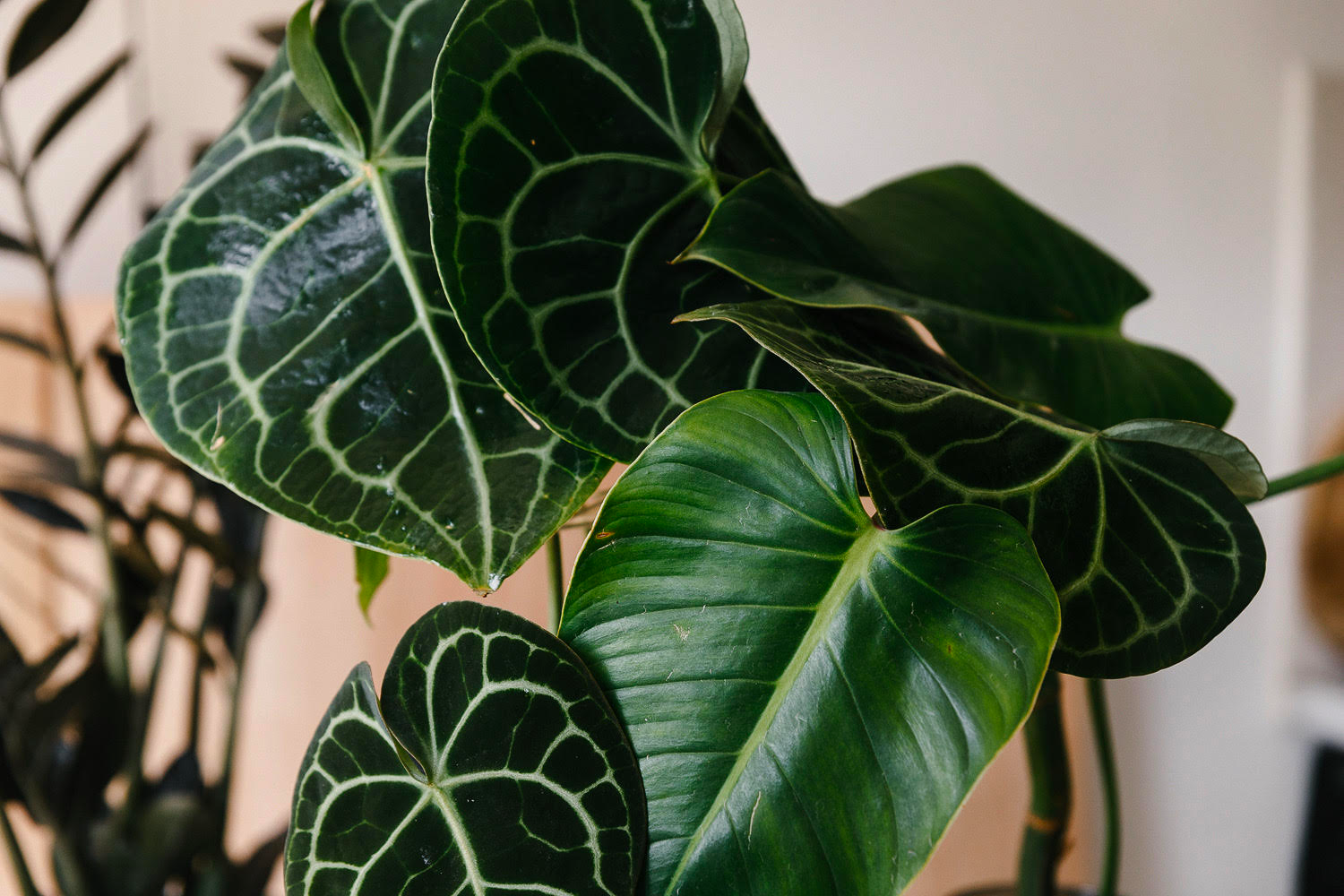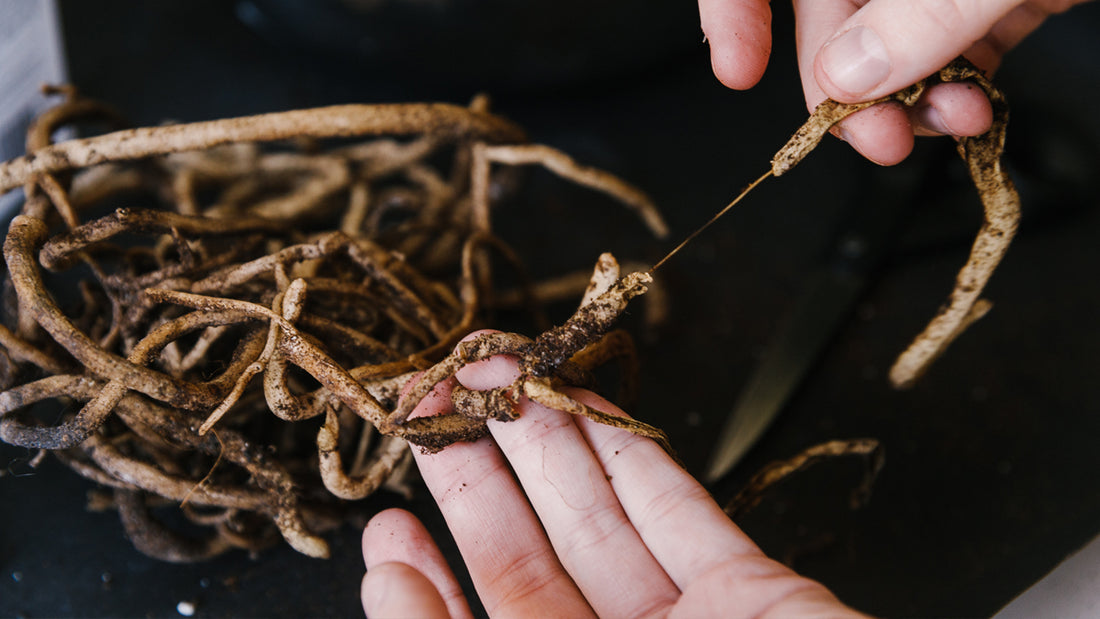Root rot SUCKS. That’s the simplest way to put it, but it happens! There are a few different reasons why your plant may have root rot; overwatering, under-watering, imported plants and over-fertilising! This can especially happen if the substrate has no aerators - oxygen is very important when it comes to houseplants as roots need it to function efficiently. If the substrate is super moist and has a lack of air, well, we’re talking rot city. Root rot is a disease, don’t let it defeat you (or your plant). If you catch it early there are steps you can take to get rid of it, so your plant can make a full recovery!

[Root rot from importing]
Overwatering
When you overwater your plant severely, bad bacteria and pathogens will begin to form. Along with the lack of Oxygen, this will override any of the root's defence mechanisms and any good bacteria within the soil. Root rot starts at the distal tips of the roots, this is caused by anaerobic bacteria that thrives in spaces with little oxygen, but it can be from other types of harmful fungi. The rot will then work its way up towards the plant.
Under Watering
In some cases, rot can happen if you underwater your plant. Weird right? Well it happens to the best of us. When the roots lack moisture for a very long time, or it’s in a substrate that doesn’t disperse water evenly, the roots will shrink, shrivel and die off. So when the plant is eventually watered this causes shock, making the dead roots turn into mush, thus causing rot.
Importing
Importing plants is the single most stressful thing that it can go through and its important to accommodate the plant at this time. The plant has had no access to light, water or even warmth. Not to mention it travelling through a multitude of climates and radically different temperatures - this could be for days on end if not weeks! This is especially stressful to more delicate plants like Alocasia, Calathea etc. If the plant arrives in a substrate too dry or is too wet it may have a harder time acclimating to your environment - so the likelyhood of the plant eventually suffering from root rot is high! But this is a whole other blog post within itself!
Over-Fertilising
Maybe you’ve used a slow release feed and not realised you’re watering it with a liquid feed too and this has happened more than once - this can cause chemical burn. If untreated or overlooked it will resolve in plant death. Chemical burn causes the root capillaries to burst, salts then are trapped in the stem and foliage which starts to builds up. The trapped salts then continuously draw water in from around them, which causes severe lesions. At that point the plant will be completely gone and all if not most roots will be dead. Always remember less is more when it comes to fertiliser.
Potted in Peat Moss
If you purchase a plant and it’s in peat moss, make sure you thoroughly check those roots over when you get down to repot! Peat moss restricts and condenses and this can be a massive issue as it can hold onto moisture for a lot longer. This makes it more susceptible to rot as potted plants in peat moss don’t tend come with with aerator’s.
How To Spot Root Rot!
 Root rot from under-watering
Root rot from under-watering
There are a few signs if your plant has root rot, you don’t always need to see the roots to spot it! Your plant may start to wilt, feel soft, stems can feel mushy, leaves start to yellow, black spots may appear and growth may have slowed down. Sometimes it can be hard to spot, so just be aware of root rot no matter what substrate or form of growing you may choose.
When you get down and dirty to check the root system, there are a few things to look for. Root systems can be many different colours like; white, red, beige, sometime’s with hints of pink, yellowish tips or even brown/black from the soil. A telltale sign is if the roots feel mushy/slimy and If you pull gently at the root, it will come away and leave what looks like a strand of hair. On some occasions you can smell the rot - this kinda smells like a swamp.
 Root rot from importing.
Root rot from importing.
In most cases you should have some healthy roots left, which is good! It means the plant has a good chance of bouncing back. Worse case scenario the roots may be completely rotted away and you may have to cut the roots back to a stump. Depending on how bad it is, you may be able to re-root the plant and start again, but this depends on the plant and it’s current state.
How To Deal With Root Rot

Let's talk getting down and dealing with it! Here’s what you’ll need:
- Sterilised pair of scissors
- Hydrogen peroxide (3%)
- Filtered or distilled water (not essential, it can be tap)
- A bowl (big enough to dip the plants roots into)
- Fresh substrate
- Potting tarp
First of all take the plant out of the pot and remove as much of the previous soil from the roots so you can fully inspect the situation at hand.
 Root rot from importing.
Root rot from importing.
Now it’s time to make your hydrogen peroxide mix! Using one part 3% hydrogen peroxide and two parts water. Get your plant and give the roots a good dip within the mix, no need to leave it in - a dip and a swish is all it needs.

Aftermath

After treating your plant there are always these two questions;
- Can I use the same soil the plant was in?
- When do you water your plant after treatment?
Firstly re-using the soil can be a risk since it's probably riddled with harmful bacteria and pathogens. If you want to reuse the soil you need to sterilise it before you repot - this can be very risky and it isn’t highly recommended unless you have a thorough method of sterilisation.
If you are planning to put it into peat moss or a substrate that has no aerators, please reconsider as this can increase your chances of the rot coming back again.
When you get down to repotting make sure you sterilise anything that has been in contact with the root rot, like the pot it was in or any tools. Also if you have lost a lot of roots because of rot, just keep in mind what size pot you are potting it into. You may not want to re-use the original pot it was in, as it can take longer for the soil to dry out, which could bring back root rot. Pot it up in a suitable size.
If you’re cracking open a fresh bag of Soil Ninja there’s no need to sterilise, go straight ahead as we have plenty of components in our blends to help your plant bounce back!
Now you're thinking, when do I water my plant? Scary right? We advise not to right away, but within the same week of repotting is fine. The Soil should be slightly, naturally moist, so water when the top few inches feel dry as per normal. If you have treated your plant, it shouldn’t be a problem again.
Lastly do not fertilise your plant after root rot for a few months! Not feeding your plant will encourage the plant to work on it’s roots, rather than it’s leaves. Feeding your plant may also cause further stress.

Top Tips!
- Use clear pots for the plants you’d like to keep a close eye on. This is a great way to spot root rot early!
- Water you plant out of its decorative pot - this is so it doesn’t sit in a pool of water and it can drain off properly.
- Sprinkle some cinnamon on the roots before you repot your plant. It's a natural fungicide.
- When you repot a new plant, always take your time looking at the roots so you can spot rot root early on.
- Remove any yellowing, leaves with black spots and dying leaves after treatment - this will help the plant’s reserve energy and relieve it from any more stress.

Like we said, rot SUCKS, but by following these steps we hope you can deal with it and also prevent it from happening. Good luck you dirty lot!

